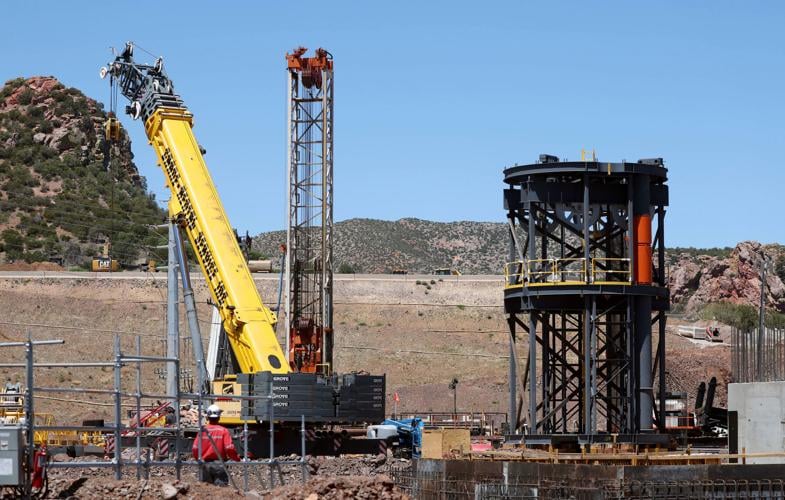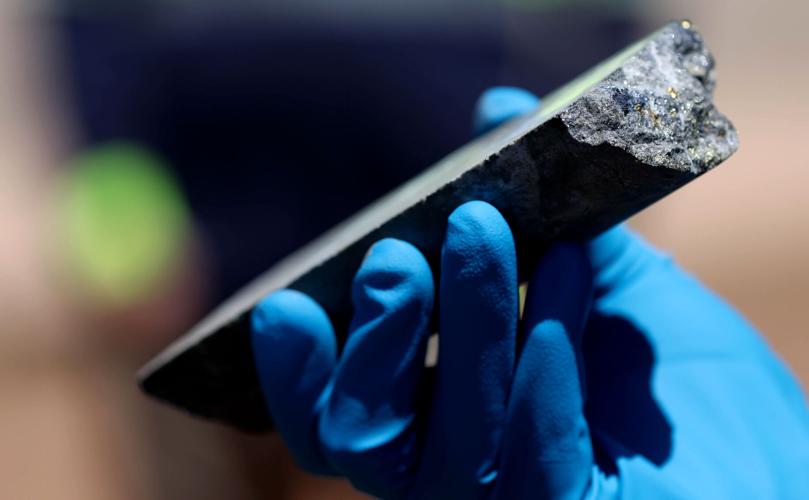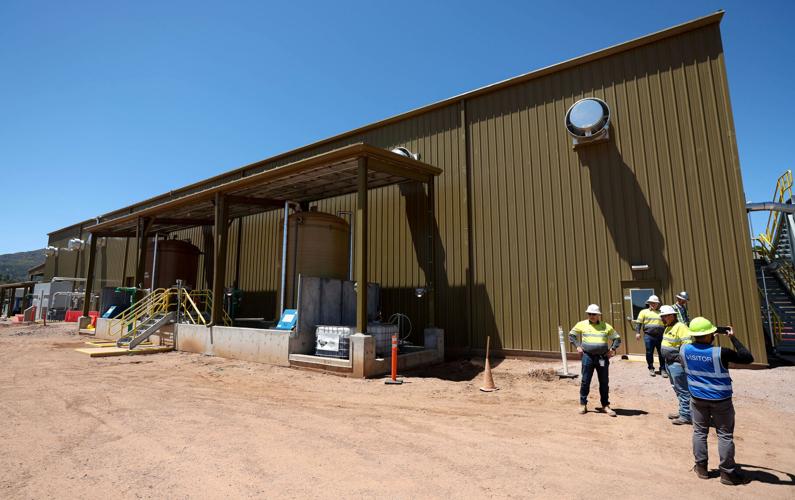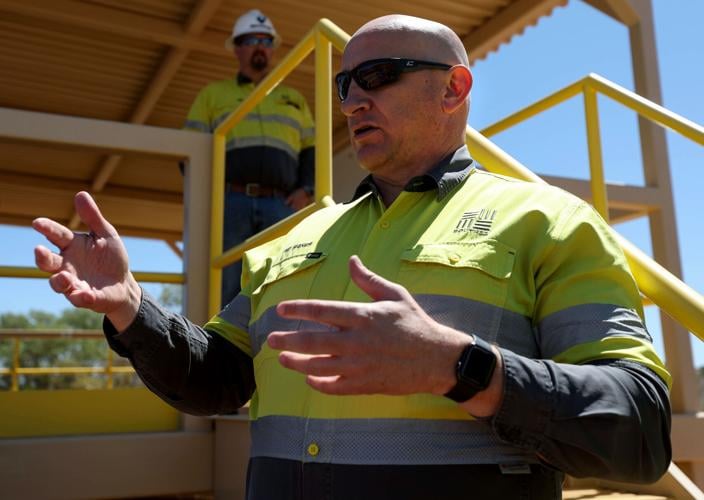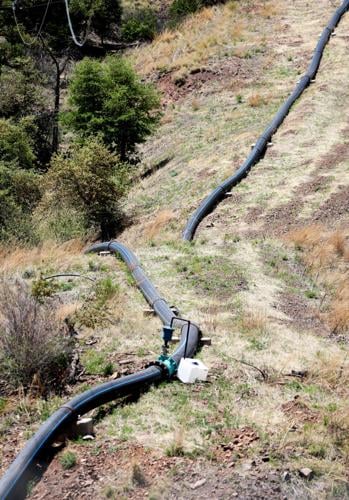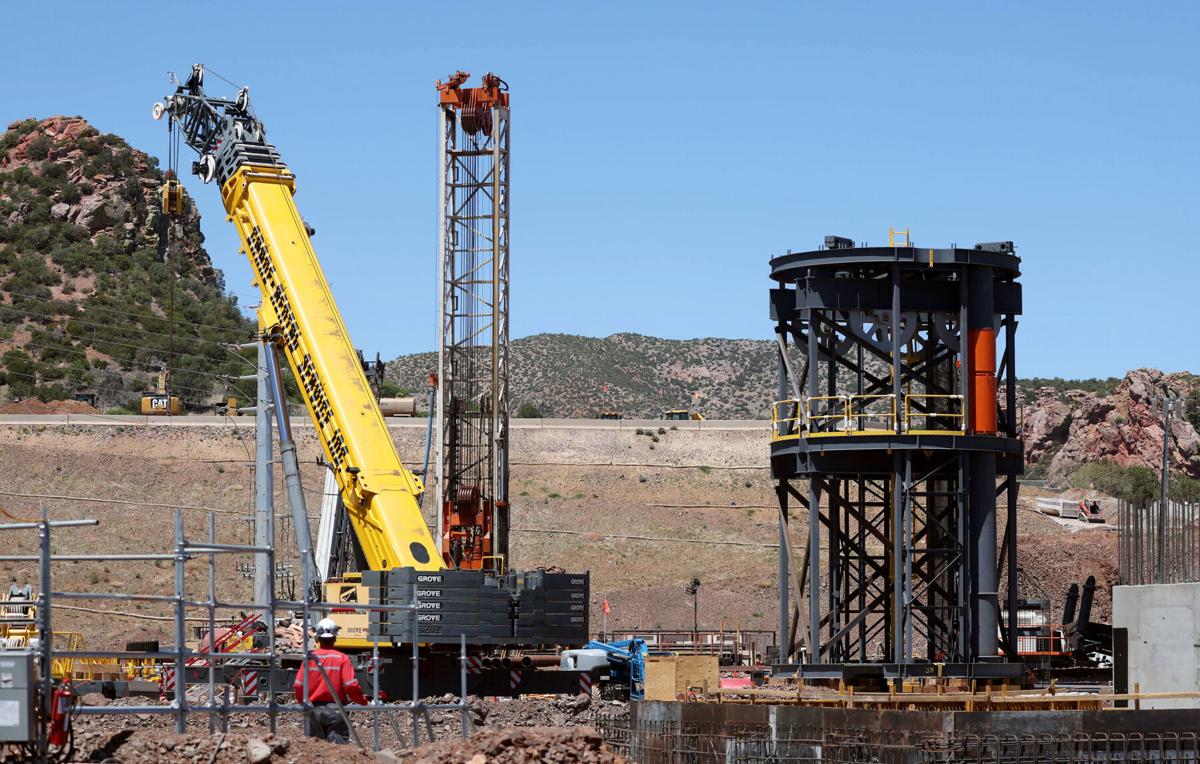Its billboards and online ads tout the South32 Hermosa project as a “different kind of mine for Southern Arizona.”
Federal regulators are now asking the public to weigh in on how best to evaluate that claim.
On Friday, the U.S. Forest Service officially launched its environmental review of the multibillion-dollar zinc, lead and manganese mine in the Patagonia Mountains, about 75 miles southeast of Tucson.
The process mandated by the National Environmental Policy Act — or NEPA for short — begins with a 30-day public scoping period, during which the agency will collect comments on the project’s potential impacts, possible alternatives and other information that could help shape the review, currently slated for completion in mid-2026.
Already, though, those living closest to the mine are asking for more time.
In a letter last month, the Santa Cruz County Board of Supervisors urged the Forest Service to extend the scoping period to 60 days and hold at least four public meetings in English and Spanish.
“The mine will impact Santa Cruz County for the next 50 to 80 years,” the supervisors wrote. “Our stakeholders require sufficient time to fully understand the implications this mine will have on the ecosystem and the impacts mining operations may have on the public health.”

Brent Musselwhite, project director of permitting and approvals for the South32 Hermosa project, gives a tour of the mine’s water treatment plant in the Patagonia Mountains. The plant can filter 4,500 gallons of water a minute.
The town of Patagonia’s mayor, Andrea Wood, sent her own letter to the Forest Service in April asking for 90 days of public scoping.
“Thirty days is just a nightmare,” said Carol Shafer, mission coordinator for the Patagonia Area Resource Alliance, a local nonprofit.
Even the team of experienced people the alliance has recruited to help them navigate the NEPA process will struggle to meet that deadline, she said.
“Sixty days will allow our experts time to breathe. Ninety days will give the broader public a chance to engage in the process,” Shafer said.
Critical need
Australia-based minerals giant South32 has already begun construction of the underground mine on private land it owns in the historic Harshaw mining district, about 9 miles from Patagonia.
In February, the company announced plans to spend $2.16 billion on the Hermosa Project to develop what could be one of the world’s largest untapped zinc deposits.
That’s on top of the roughly $400 million South32 has plowed into the property since acquiring it in 2018.
Hermosa project president Pat Risner said the site also appears to contain enough battery-grade manganese to meet most of the domestic demand for what is a key ingredient in the electric-vehicle supply chain.

A South32 employee holds a core sample containing zinc ore during a media tour of the Hermosa project site in the Patagonia Mountains. The mine is now undergoing federal environmental review is expected to produce zinc, manganese, lead and silver.
Both zinc and manganese are designated as critical minerals by the U.S. Geological Survey, and President Joe Biden has invoked the Defense Production Act to increase mining and processing of manganese in the U.S.
The NEPA review will focus on South32’s plans to mine beneath Coronado National Forest and build support facilities on public land surrounding its private tract.
The proposed facilities on forest land include a second dry-stack tailings pile and at least two infiltration basins for returning treated groundwater back into the local aquifer.
South32 also wants Forest Service approval to build a new 138-kilovolt transmission line to deliver power to the mine and an 8-mile road through Flux Canyon that would link the site to Arizona Route 82 near the turn-off for Patagonia Lake.
Once the new road is completed, Risner said, it will serve as the primary access route for Hermosa, dramatically reducing mine-related traffic on the county-maintained Harshaw Road now used to reach the property.
South32 is already building a new cutoff route to divert mine traffic around Patagonia to the north.
The Forest Service has scheduled two public workshops in Santa Cruz County later this month, ahead of the June 10 deadline for comments on the scope of its review.
Agency officials expect to release a draft environmental impact statement on Hermosa a year from now and the final version of the document in February 2026.
An official record of decision on whether to allow the mine to expand its operation onto Forest Service land is currently slated for release in July 2026.
Starting next year, the U.S. Fish and Wildlife Service and the Army Corps of Engineers are also expected to review the project for compliance with the Endangered Species Act and the Clean Water Act, respectively.
If the necessary federal permits are granted and the current schedule holds, South32 hopes to begin producing zinc and lead in early 2027. After that, it should take about two years for the mine to ramp up to full production, Risner said.
Incoming comments
The Center for Biological Diversity is still working on its scoping comments, but the Tucson-based environmental group will no doubt have a lot to say.
The center has already teamed up with seven other conservation groups to sue the Forest Service over exploratory drilling work it is allowing in the Patagonia Mountains by South32 and another mining company.
“When it comes to scoping, we’ll cast a pretty wide net,” said Russ McSpadden, southwest conservation advocate for the center. “We have clean-air concerns. We have clean-water concerns. We have endangered species concerns. It’s a terrible place to site a mine.”
McSpadden described the Patagonias as “one of the most complex, diverse and ecologically sensitive areas in North America.”
The range is one of several sky islands in Arizona that form the northern boundary of a globally recognized biodiversity hotspot stretching through the mountains of Mexico, he said.
The Hermosa site is basically surrounded on all sides by designated critical habitat for several endangered species, including jaguar, yellow-billed cuckoo and Mexican spotted owl, but round-the-clock construction activity, truck traffic, noise and light pollution are likely to drive such rare animals away, McSpadden said. “If critical habitat is inhospitable, it’s sort of pointless.”

A water pipe runs down a hill at the South32 Hermosa mining project site in the Patagonia Mountains. Project officials say the operation will consume roughly 75% less water than a typical mine in Arizona.
He isn’t crazy about the Forest Service serving as the lead agency for the NEPA process, either.
In the past, he said, the agency has tended to side with “the polluter over the interests of the surrounding communities and the environment.”
McSpadden questions whether Coronado National Forest officials are up to the challenge of reviewing a project of this magnitude, when he said he can’t even get them to respond to public records requests in a timely fashion.
“It’s not clear whether we’ll have a clear line of communication with the permitting agency,” he said. “And if a community doesn’t have that, it can be truly terrifying.”
Starr Farrell, public affairs officer for Coronado National Forest, promised a review of the Hermosa project that “strictly adheres to all applicable laws, regulations, and policies.”
“The Coronado National Forest is committed to engaging in a robust NEPA analysis of project alternatives that are based on best-available science, a thorough accounting of natural and cultural resources, and focused outreach to and input from the public, tribes, local government, public-interest groups, and all stakeholders,” Farrell said in an email. “We have a history of successful environmental reviews and are consistently pioneering processes to ensure that decisions are made responsibly to meet the needs of present and future generations.”
Small footprints
During a recent media tour of the Hermosa site, project officials focused on all the things they are doing to shrink the physical and environmental footprint of the mine.
While a typical open-pit operation might disturb around 20,000 acres of land, Risner said, Hermosa will be confined to no more than about 750 acres.
Roughly half of the tailings produced by the mine will be combined with concrete and pumped back underground to fill in mined-out chambers and keep the surface from subsiding.
Risner said the rest of the tailings will be stacked dry on top of special liners designed to capture water and channel it to a state-of-the-art treatment plant already built and operating at the site.
All told, he said, Hermosa will consume roughly 75% less water than a traditional mining operation.

South32 Hermosa president Pat Risner talks about the mining project during a media tour.
Risner said South32 is equally committed to reducing the mine’s carbon footprint. The transmission line they hope to build, for example, will enable Hermosa to shut down its diesel generators and power the operation with renewable energy instead.
The mine also plans to use electric haul trucks and equipment wherever possible, as South32 works toward a company-wide, net-zero emissions goal by 2050.
Brent Musslewhite, Hermosa project director of permitting and approvals, said their aim is to “set a new standard for sustainable mining.”
“Because we are building it from the ground up, it is being designed to minimize environmental impact,” Musslewhite said.
Shaping the scope
Shafer, from the Patagonia Area Resource Alliance, dismisses all that with a single word: “marketing.”
As far as she is concerned, “21st-century industrial mining” simply isn’t compatible with one of the most biologically diverse places in the country and the people who have built their lives around it.
“This is a nature-based economy,” she said. “We are sacrificing our future.”
Even so, Shafer seems resigned to the notion that they won’t be able to prevent the Hermosa project altogether — not with a promised investment of $2 billion-plus, and not in a nation so hungry for critical minerals.
So the alliance and its partners will voice their concerns and suggest their changes before time runs out on the comment period, she said.

An outside view of the water treatment plant at the South32 Hermosa project site in the Patagonia Mountains.
They will ask for the transmission line to be buried instead of carried across the land on towers to reduce the risk of a devastating wildfire like the ones in California that were sparked by electrical equipment in recent years.
They will demand intensive studies of groundwater flow and connectivity in hopes of preventing springs and seeps from drying up as a result of unexpected hydrologic changes caused when naturally fractured rock underground is replaced with mine tailings held together by concrete.
They will lean into the process and count on federal regulators to regulate as required.
“Our goal isn’t to stop mining. We have to be realistic about that,” Shafer said. “Our goal is to hold the state and federal agencies to the letter of the existing law.”


